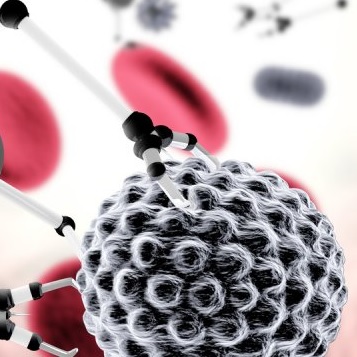
Iranian Polymer Researchers at Amirkabir University of Technology have developed a new drug delivery nanosystem for the treatment of liver cancer which is expected to overcome the shortcomings of the existing methods. Suspended drug delivery systems have been on the researchers’ attentions since 1970’s by development of novel polymers.
Produced on a laboratory scale, it will enter the mass production phase after animal testing and clinical trials.
According to Mohammad Amani, PhD, and the executive director of the project, The new synthesis method in the niosomes nanosystem is among the innovations in the field.
Drug delivery refers to approaches, formulations, technologies, and systems for transporting a pharmaceutical compound in the body as needed to safely achieve its desired therapeutic effect.
It is typically concerned with both quantity and duration of drug presence. Drug delivery is often approached via a drug’s chemical formulation, but it may also involve medical devices or drug-device combination products.
These methods can help reduce the side effects of traditional drugs and improve patient convenience and compliance.
Niosomes are a novel drug delivery system that is finding application in gene delivery, drug targeting, etc.
They can improve the therapeutic performance of the drug molecules by protecting the drug from biological environment, restricting the drug effects to target cells and delaying clearance from the circulation in sustained drug delivery.
“In this project, we managed to use niosomes in the production of drug-delivery nanosystems for the treatment of liver cancer,” said Amani.
Liver cancer starts in the liver (hepatic cancer) or spreads from some other organ (liver metastasis). The latter type is more common than the former.
Among 6 Most Common Cancers
It is among the six most common cancers in the world and the third cause of mortality in cancer patients. Based on data from the World Gastroenterology Organization, 700,000 people in the world lose their lives to liver cancer each year.
Almost 85% of liver cancers occur in under-developed and developing countries. The largest prevalence is found in east and Southeast Asia as well as central and west Africa.
Almost half of hepatic cancers are seen in China, Taiwan, Hong Kong, Japan and Korea, while Australia, the US and north Europe have the smallest numbers of the disease.
Data in 2010 showed that mortality rates from liver cancer in Iran stands at 5.37 per 100,000 people.
The disease is also among the most common metastatic cancers along with cancers of the rectum, colon, lung, breast, pancreas, gullet and skin (malignant melanoma).
Worldwide, the most common risk factor for liver cancer is chronic (long-term) infection with hepatitis B virus (HBV) or hepatitis C virus (HCV).
Conventional treatments include chemotherapy, radiotherapy, surgery and liver transplant, none of which have so far been noticeably effective and have disadvantages.
Mass vaccination against hepatitis B, promoting physical exercise among the people to prevent obesity and enforcement of restrictions in tobacco and alcohol use can help control liver cancer.
Caption: The innovative system is expected to overcome the shortcomings of the existing treatment methods for liver ca












